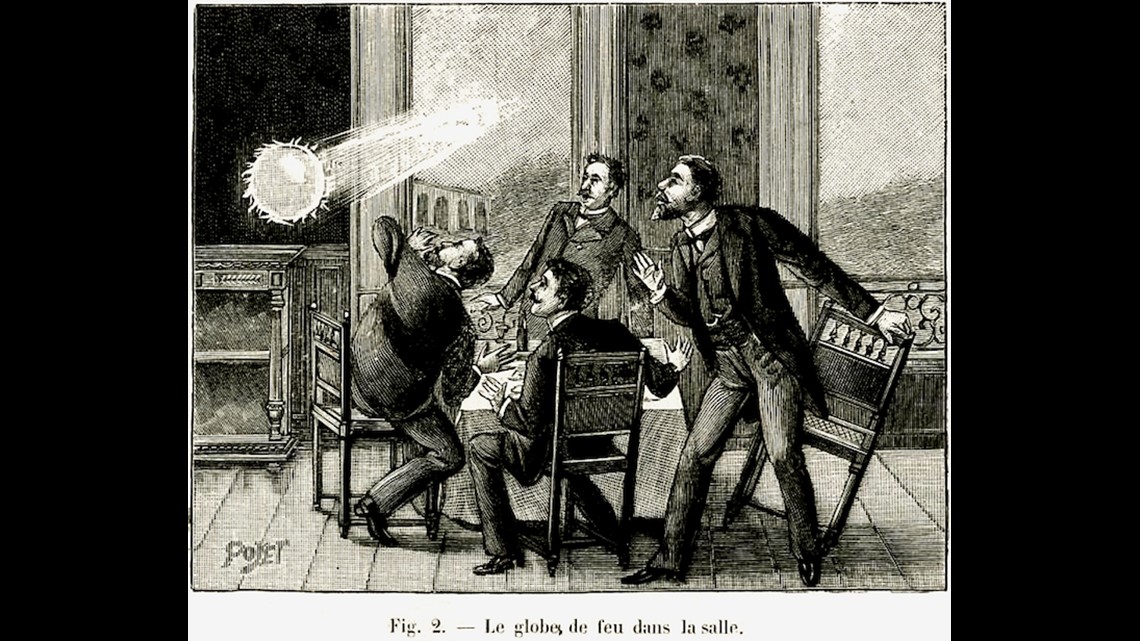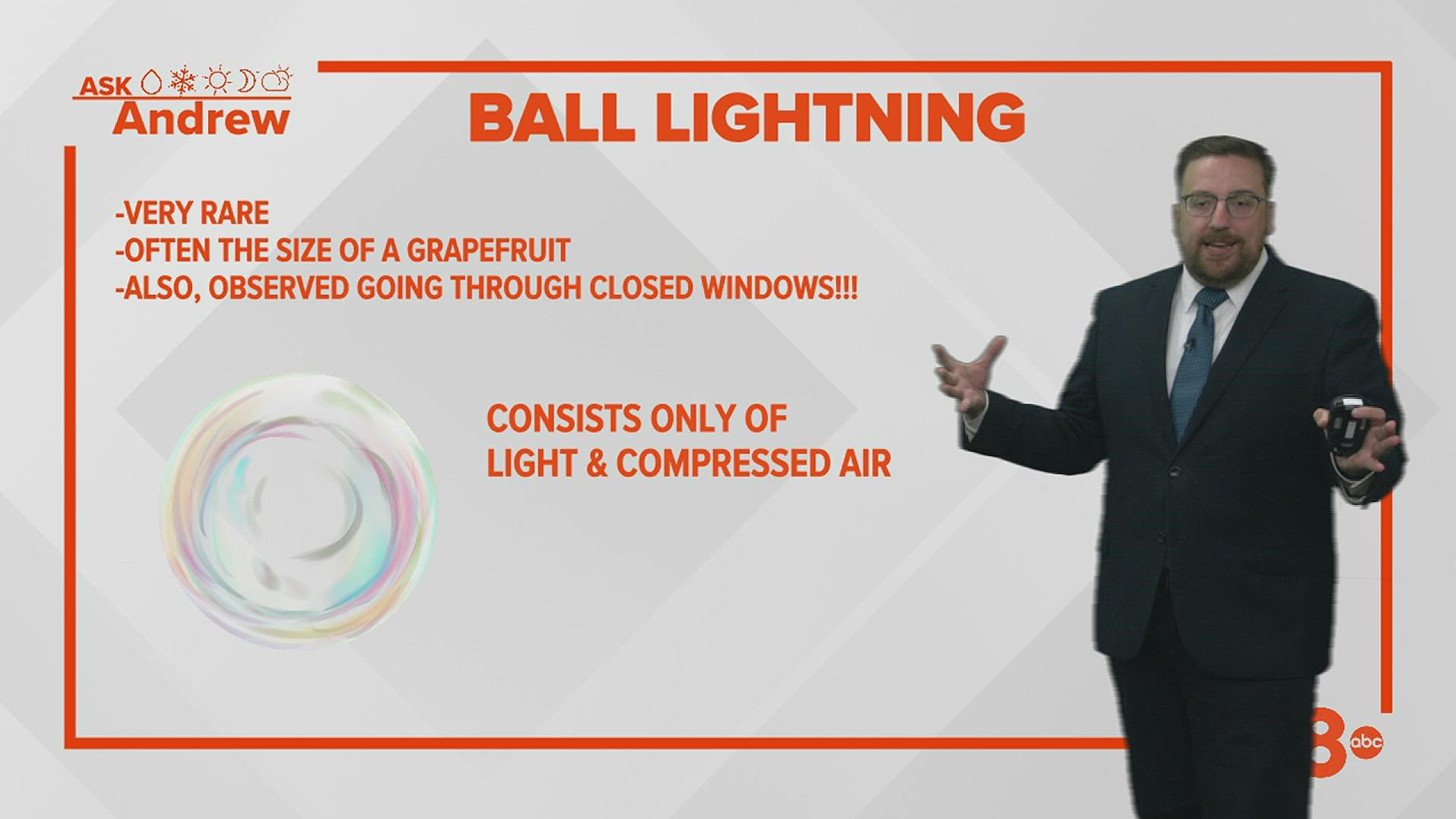MOLINE, Ill. — We're all familiar with lightning that goes from cloud to ground, ground to cloud, and cloud to cloud. The thin, step-like shaped bolt of electricity produces quite a bang as the air rapidly expands around it. What about a different kind of lightning that you likely haven't seen? One that can travel through windows and has been documented as early as the year 1901? Introducing, ball lightning!
Often thought of as another form of lightning, ball lightning may actually not share the same characteristics as traditional lightning according to many scientists. New research, using eyewitness reports and experiments shows that ball lightning may actually just be made up of highly compressed air in which light can illuminate a space in all directions.


Picture a typical soap bubble. The spherical surface is capable of forcing light just like a lens. When brought to a certain intensity, air particles would get moved to the film of the bubble, where certain photons (light particles) can be concentrated for a few seconds at a time. Thus, giving you the ball-like appearance as this object takes shape. Most scientists also believe that ball lightning averages the size of a grapefruit.
Is ball lightning dangerous?
Like traditional lightning, ball lighting does come with its fair share of concerns. Depending on the size of the sphere, you could be exposed to UV radiation, causing burns. There have also been circumstances where ball lightning has set fire to buildings like traditional lightning strikes often do.
Bottom line; There is still a lot that we don't know about when it comes to ball lightning and its lifespan. As technology continues to advance, it likely won't be long until we will be able to more confidently break down how and why it forms.
Have a question that you would like me to answer in an upcoming "Ask Andrew" segment? Submit it here!

